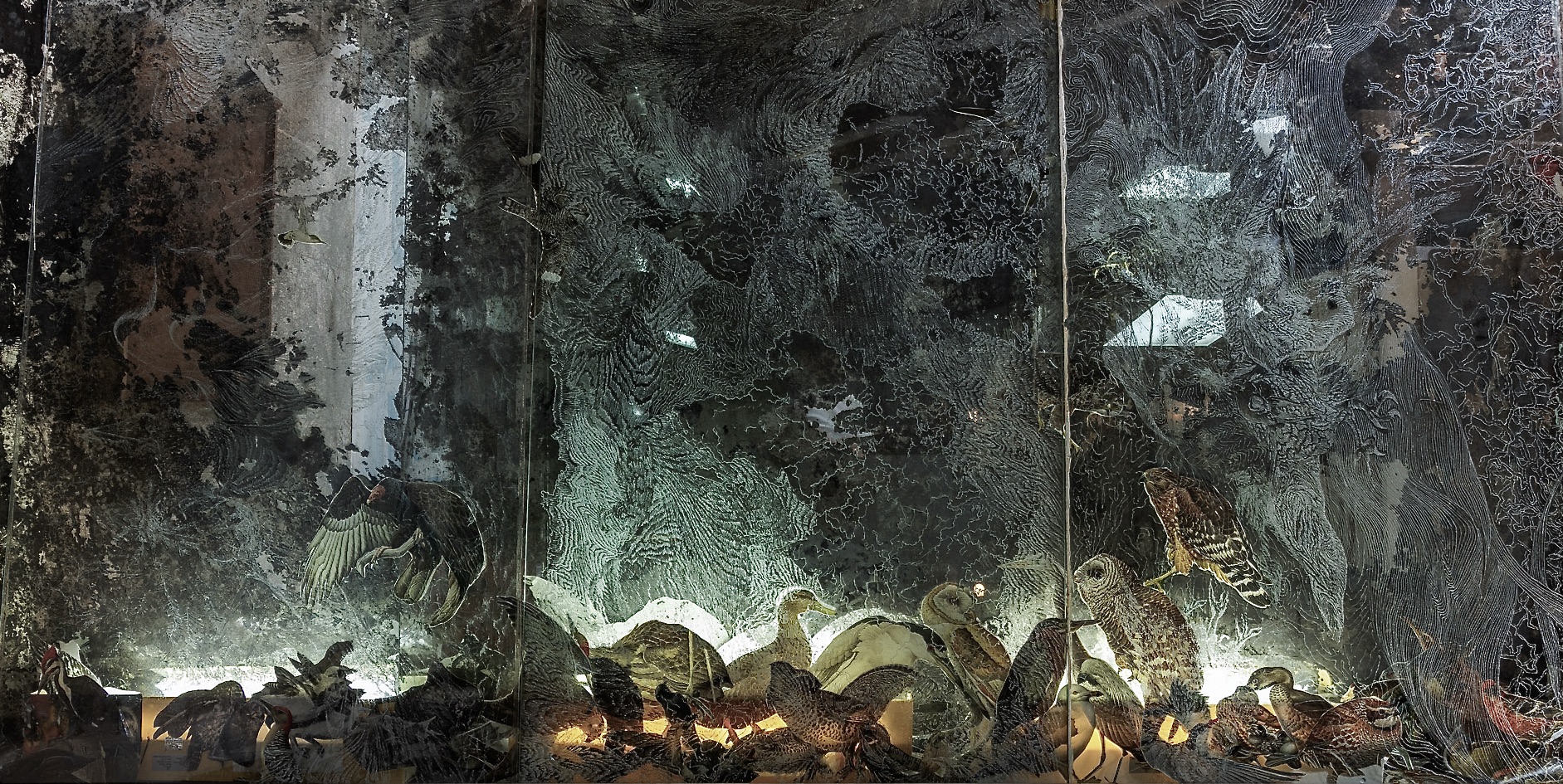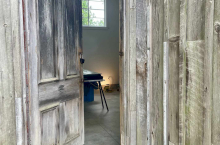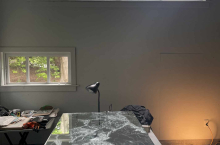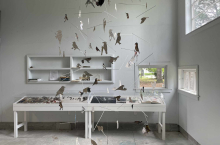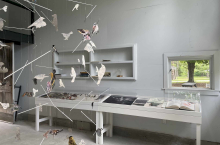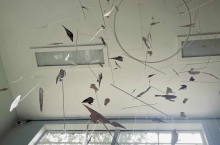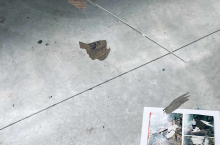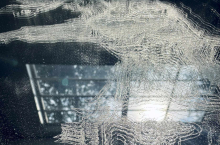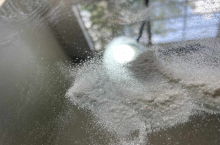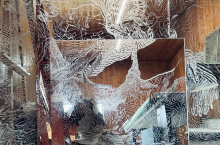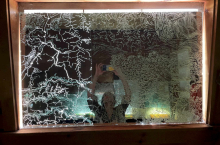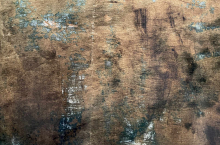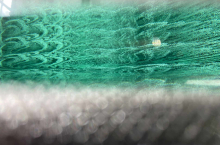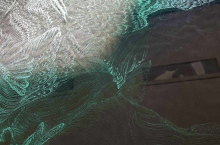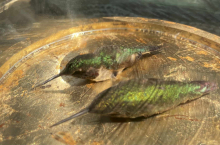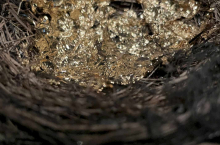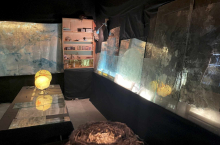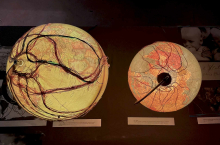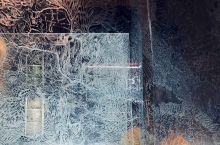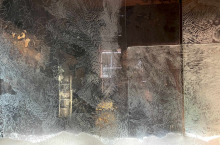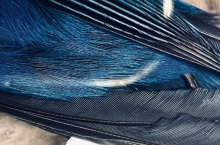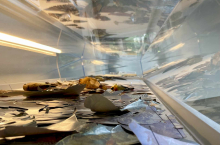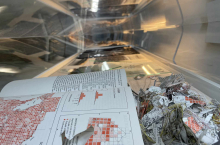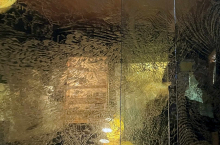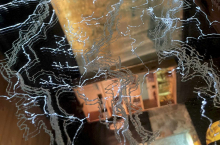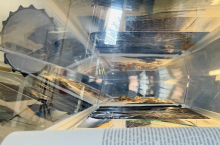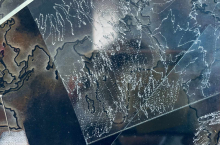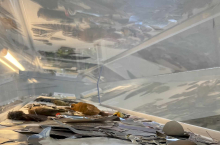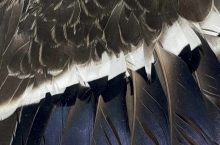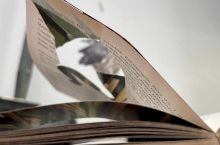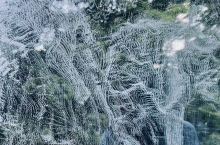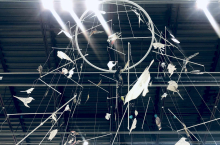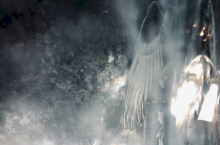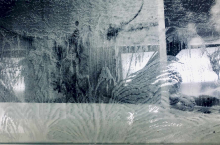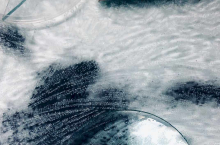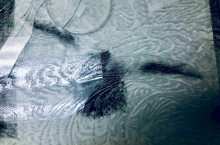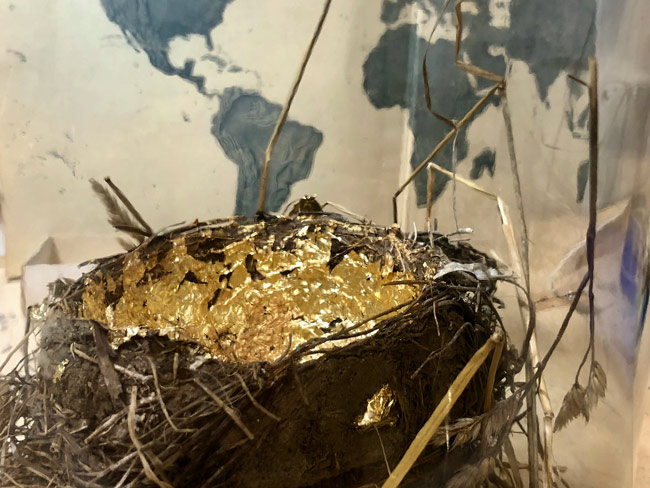
Seventeen grams is the average weight of a migrating songbird. These birds travel biannually thousands of kilometers over landmasses, lakes and seas. Some species even migrate from one continent to another. They have to navigate through urban, industrial, and agricultural spaces on their journeys. Their search for food and breeding locations, their instincts, and perhaps their longings lead their way.
In my project, I investigate the human fascination with bird migrations, and how we, at times, project our longings for journeys and adventures onto this avian phenomenon.
I created the artistic legacies of two brothers, to be discovered on different continents, through the unfolding of an exhibition in Berlin at PSM Gallery which took place in March 2024, and at two locations in Toronto: at Daniel Faria Gallery and in Garage766 in the west end of the city, accessed via a map and code provided by DFG.
The twins Kurt and Carl Pfister were born in Augsburg, Germany during the Second World War. They were separated as small children after their father died in the war, and their mother—remarried to an American soldier—moved to the United States, leaving Kurt to be raised in Berlin by her in-laws, his grandparents. Carl, whose name was changed from the German spelling to the American upon emigration, was raised in Detroit and then later relocated to Toronto, Canada. Unaware of the others’ existence, Kurt and Carl grew up with an unspoken longing and intangible absence. Both became fascinated by the fragile lives of migratory birds, an enthrallment that manifested with each twin with their own creative pursuits. This deeply shared interest, as well their mutual desire to express their interests through an artistic lens, broaches the age-old question of how much we are determined by nature and how much by our experiences?
Text continues after photo gallery...
...Text resumes from above.
The twin Kurt (Germany), collected ornithology books, which he deconstructed, cutting out every illustration that depicted a bird. While more and more bird-shaped gaps and holes appeared in the books, the resulting cut-outs became intricate and delicate mobiles. His studio, a vacant room in the basement of a house at Schöneberger Ufer 61 in Berlin, Germany, was filled with books and cassette tapes of bird songs. Underneath a sheet of hand-painted canvas attached to the ceiling, hung hundreds of cut-out birds, each painstakingly cataloged with the page number and title of the book from which it came. Fluttering above an old armchair, these simple cut-outs transformed the tiny basement into a space both mysterious and boundless.
Carl (USA/Canada), who installed windows for a living, was so moved by the tragic imprints of birds’ wings left behind from their collisions with the glass that he would trace them onto carbon paper and transform the patterns into glass engravings. In his former workshop, discovered in a garage in Toronto, we find those engraved panes of glass and mirrors leaning against the walls. They not only picture the tracings of birds’ wings, but also recreate studied maps and migration routes, overlapping and interlacing with one another. Ornithology books, world atlases, maps and photos clutter the space amongst tools and personal detritus.
It is within Carl’s workshop that I have set up my own contemporary art studio, showing the twins’ histories and research into the migrations and lives of songbirds that ultimately inspired my new body of sculptures and engravings.
I gratefully acknowledge the support of the Canada Council for the Arts, the Ontario Arts Council and the Toronto Arts Council over the last 3 years for this project.
I heartily thank the Fatal Light Awareness Program (FLAP) and the Toronto Wildlife Center for my learning and their contribution of source material.
